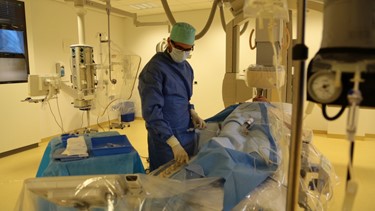How To Keep Hospital ORs Running Smoothly During M&A Integration
By Mark Mele, Casetabs

The healthcare industry is undergoing a major transformation. In response to rising costs, shrinking reimbursements, and an ever-changing regulatory environment, hospitals and health systems are left searching for ways to reinvent themselves. For many, the answer is merging with, or acquiring, another hospital or health system.
Over the past decade merger and acquisition (M&A) activity has become increasingly more common in the healthcare industry. Consulting firm Kaufman Hall and Associates reported 115 hospital and health system mergers in 2017 alone. And while there were fewer hospital M&As in 2018, those that closed were larger. M&A activity is expected to continue to dominate headlines in 2019.
As these deals close, hospitals and health systems are faced with a new, bigger challenge— post-merger integration (PMI). PMI is the most critical part of a merger or acquisition; where efficiencies and synergies are captured, and the true value of a deal is realized.
Merging organizations—including people, processes and technology—into a newly combined entity is a highly complex process. Given the high stakes, it’s no wonder significant planning goes into PMI. Yet, no matter how diligently integration teams plan, PMI typically takes much longer than projected. Keeping ORs running smoothly during this process will help the financial performance of the merged hospitals.
The Importance Of OR Efficiency
ORs are typically the largest revenue-generating areas within a hospital. Because they are resource-intensive, they are also one of the highest cost centers. Therefore, OR efficiency is critical to a hospital’s financial performance.
A Journal of the American Medical Association (JAMA) study cites that OR time costs an average of $36 to $37 per minute in California. Depending on the complexity of a procedure, charges can increase. When an OR sits idle due to delays and last-minute cancellations, costs quickly add up. Reducing or eliminating OR idle time is essential to success—and it keeps physicians and patients happy. Seamless communication among surgical teams keeps ORs running smoothly, but this is difficult because, until PMI is complete, hospitals continue to communicate via different scheduling software and EHR/EMR systems.
With disparate systems that don’t talk to each other, surgical teams have to look for alternative methods to coordinate cases and communicate updates and changes. Many utilize outdated technology like phone, fax and text. These manual workarounds come with their own set of problems. Beyond the compliance issues, it is very easy for case members to be missed when relying on phone, fax and texts to send updates and changes.
Fortunately, advances in technology, driven by cloud-computing, are enabling hospitals to overcome surgery-related communication issues. Web-based surgery coordination technology uses information within an EHR/EMR to streamline scheduling and case communication, or it can be used as a stand-alone hub for all scheduling and case-related communication for surgical teams. Surgery coordination applications serve as a project management platform for coordinating and communicating real-time case information. In doing so they enable physician office teams, hospital staff, anesthesiologists and ancillary teams including medical reps, radiology and pathology to share information. With everyone on the same page, errors and OR delays are avoided, and outcomes greatly improve.
During a merger or acquisition, it’s also important that the hospital-physician relationship is not overlooked. Afterall, if physicians are not happy, they will refer patients elsewhere. Making it easy to schedule and coordinate cases, no matter how far along the integration process, eases physician concerns. It also demonstrates that patient safety and care remain a priority.
A smooth-running OR benefits a hospital’s bottom line. Affordable, easy-to-use solutions are available to ensure seamless communication throughout the PMI process and into the future.
About The Author
Mark Mele is Vice President at Casetabs, the pioneer of cloud-based surgery coordination technology. He has 15 years of sales and marketing experience in medical devices, working for ConMed, Biomet, and NuVasive. Mark is experienced in building start-up territories and managing teams and product lines with over $100 Million dollars in annual revenue. He is a graduate of the University of Illinois at Urbana-Champaign.
